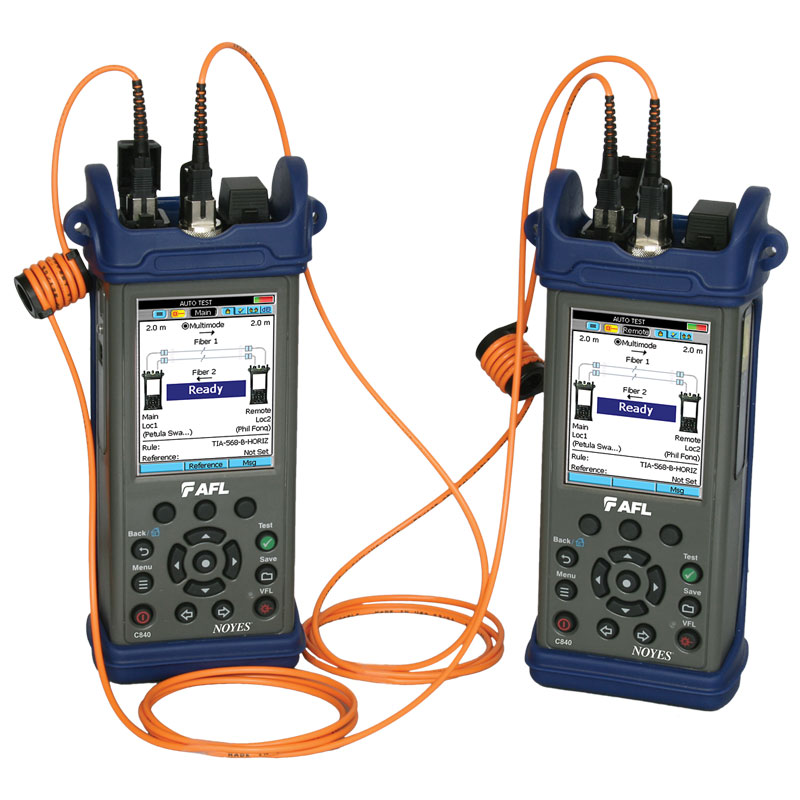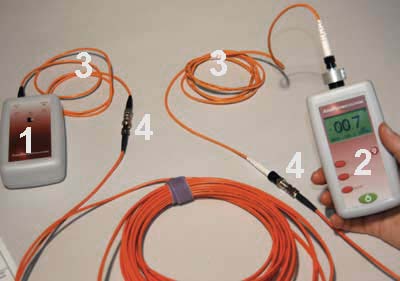Robotic vision supports streamlining manufacturing and quality control.
Robotic vision supports streamlining manufacturing and quality control.
Blog Article
Discovering the Perks of Optical Fibre Testing for Enhanced Interaction Solutions
The importance of optical fiber screening in contemporary interaction systems can not be overstated, as it works as a structure for making sure network reliability and efficiency. Using advanced techniques such as Optical Time-Domain Reflectometry (OTDR) and insertion loss evaluation, organizations can not just identify mistakes yet also maximize their setups. This aggressive testing method has profound effects for signal high quality and operational effectiveness, raising the concern of how these methods add to long-lasting sustainability in an ever-evolving technical landscape. Comprehending these characteristics is important for stakeholders aiming to preserve an affordable edge.
Value of Optical Fiber Screening
The importance of optical fibre screening can not be overemphasized in today's data-driven setting. As organizations progressively depend on high-speed information transmission for everyday operations, the integrity and performance of optical fibre networks are extremely important. Testing guarantees that these networks can sustain the substantial quantities of information generated and transmitted perfectly, promoting reliable interaction and connectivity.
Optical fiber testing offers several vital functions, consisting of confirming installment top quality, recognizing prospective mistakes, and determining overall system performance. Regular screening can prevent costly downtimes and solution disruptions, allowing organizations to maintain operational continuity. Furthermore, it helps in compliance with industry standards and regulations, ensuring that fiber optic installments fulfill needed specs for security and integrity.
Furthermore, testing can improve the durability of fiber optic systems. By proactively determining problems such as signal loss, attenuation, or adapter failures, organizations can resolve issues before they rise, therefore extending the life of their framework. In recap, optical fibre screening is not merely a technological demand but a critical financial investment that enhances network integrity, enhances efficiency, and eventually supports the growth and performance of contemporary interaction systems.
Secret Testing Techniques

OTDR is a vital technique used to determine faults, step splice losses, and analyze the overall stability of a fiber optic web link. By sending a pulse of light down the fibre and assessing the reflected light, service technicians can pinpoint areas of mistakes and review the network's performance over long distances.
Insertion loss screening gauges the quantity of signal loss that takes place when light passes with a connection or splice. This approach is important for verifying that connections fulfill given loss thresholds, which is important for preserving optimum performance in communication systems.
Optical return loss testing quantifies the amount of light reflected back towards the source because of flaws in the fiber or links. High return loss worths suggest better performance and decreased signal deterioration.
With each other, these testing techniques supply a detailed evaluation of fiber optic networks, ensuring their dependability and performance in diverse communication applications.
Effect On System Efficiency
Efficient optical fibre testing directly influences the total efficiency of interaction systems. By making certain the honesty of fiber optic cable televisions, testing identifies potential mistakes such as depletion, splice loss, and adapter misalignment. These issues can dramatically weaken signal top quality, see bring about disturbances and reduced data transmission rates.

Moreover, regular optical fibre screening adds to long-lasting system sustainability. It makes it possible for very early discovery of deterioration, enabling prompt maintenance and upgrades prior to significant failings happen. This not just prolongs the life-span of the infrastructure however additionally guarantees that interaction systems stay competitive in regards to performance.
Cost-Effectiveness and Effectiveness
Cost-effectiveness is an important factor to consider in the deployment and upkeep of optical fibre networks. Carrying out durable optical fibre testing treatments can dramatically minimize functional costs by determining issues prior to they rise right into major problems. optical fibre diameter analyser. By detecting faults, depletion, and various other efficiency obstacles early, companies can avoid expensive repair work and downtime, which can interfere with services and bring about earnings loss
Additionally, reliable testing approaches improve the setup procedure, enabling specialists to function better. This converts to reduce labour expenses and faster job conclusion times. Advanced testing tools, such as Optical Time Domain Name Reflectometers (OTDRs), allows a precise assessment of fibre quality, guaranteeing that only optimal materials are utilized, thus minimizing waste.
Regular testing likewise adds to much better source allowance. By understanding the network's performance, companies can make educated choices concerning upgrades and developments, making sure that financial investments are made where they are most required. In recap, optical fiber screening enhances cost-effectiveness and effectiveness, sustaining the long-term sustainability and competition of interaction systems in an increasingly requiring this website market.
Making Certain Long-Term Integrity
Executing rigorous optical fiber screening not just improves cost savings and operational efficiency but additionally plays a pivotal function in guaranteeing the long-term reliability of communication networks. Constant testing techniques, consisting of depletion and data transfer assessments, aid identify prospective deterioration in fiber performance prior to it results in service disruptions.
By using innovative testing approaches, network operators can identify mistakes or weak points in the fiber infrastructure, enabling prompt removal. This proactive approach reduces downtime, making sure that interaction systems remain functional and reliable. Routine testing contributes to the development of a more resilient network, as drivers can adjust and maximize their infrastructure based on real-time data insights.
Additionally, making certain conformity with sector criteria through optical fibre screening reinforces the quality and integrity of the whole communication system. This adherence not only reinforces confidence amongst stakeholders however likewise aligns with governing needs, which are progressively strict.
Conclusion
To conclude, optical fiber testing functions as a basic element in enhancing interaction systems. By utilizing various screening techniques, such as OTDR and insertion loss assessments, networks can attain ideal performance and integrity. The positive identification of mistakes not only boosts signal high quality but additionally decreases downtime, ultimately adding to cost-effectiveness and operational effectiveness. Adherence to market criteria fosters stakeholder self-confidence, guaranteeing the lasting sustainability of communication frameworks in a progressively data-driven landscape.
Report this page